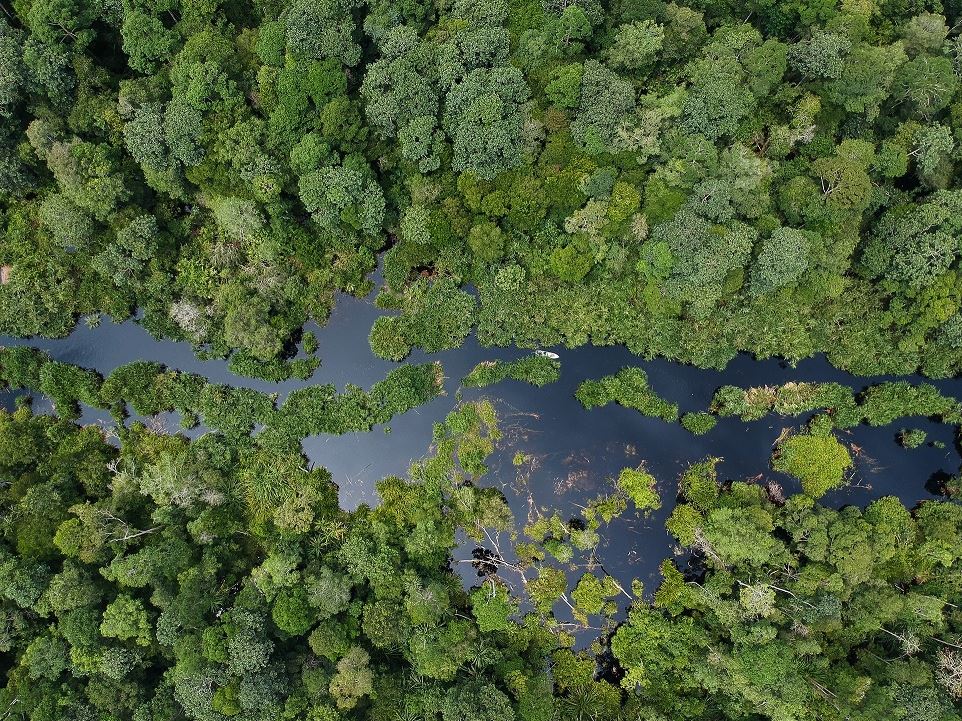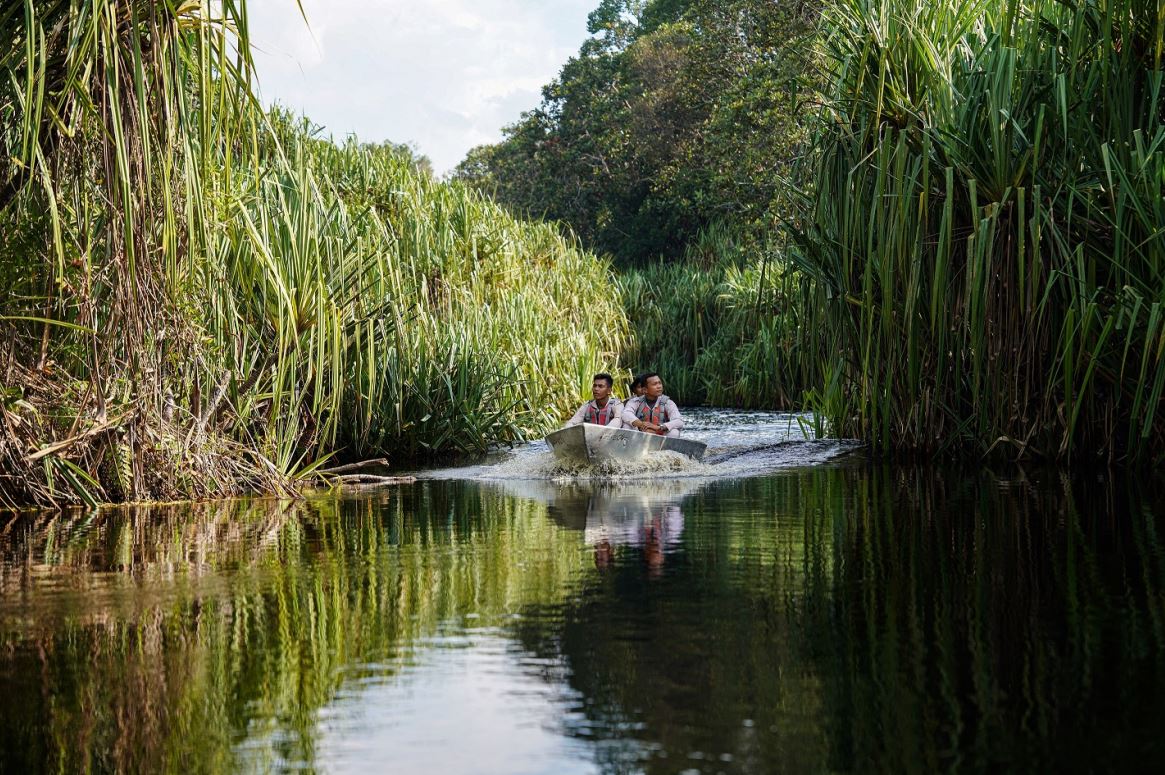January 18, 2024
Tropical rainforests are spectacular places. They are the lungs of our planet, oxygenating the atmosphere and supporting more biodiversity than anywhere else on Earth. From habitats to health products, these hot houses provide so many benefits to us and the creatures who share our world.
Ever wondered how old tropical forests are, where they can be found, or what our world would be like without them? In this article, we’ll dig a little deeper to explore the many wonders of tropical forests around the world – we’ll find out what makes them unique, why they are so important, and how they hold the key to reversing climate change on a global scale.
What are tropical forests?
Tropical rainforests are where the Earth’s life support systems go in into overdrive. Although they cover just 6 percent of our planet’s land surface, they are home to more than 80 percent of its wildlife. Home to a spectacular variety of plants, birds, insects, and mammals, rainforests are the richest, most biodiverse places on Earth. These are hot and sticky places too – average tropical forest temperatures range between 20 and 29 °C (68 and 84 °F), and never drop below a balmy 18 °C (64 °F).
Where can they be found?
Tropical rainforests are a green belt of fertile jungle that girdles the equator, where the sun shines all year round and conditions are perfect for plant growth. This tropical zone is anywhere between the latitudes of the Tropic of Cancer (23.5°N) and the Tropic of Capricorn (23.5°S). You can find tropical rainforests in Central and South America, western and central Africa, western India, Southeast Asia, the island of New Guinea, and Australia.

In Southeast Asia, most of the remaining tropical rainforests are in Indonesia. At an incredible 130 million years old, Kalimantan is home to one of the world’s oldest and most beautiful tropical forests, which supports around 15,000 species of plants, 3,000 types of trees, 221 land mammal species and at least 420 different kinds of birds. Neighboring Australia is home to the world’s oldest, the Daintree Rainforest, which is still going strong at the ripe old age of 180 million years!
Five fun facts about tropical rainforests
1. Covering 6.7 million square kilometers, the Amazon is the largest tropical forest in the world
2. 1.2 billion people worldwide rely on rainforests for their livelihoods
3. Rainforest plants provide medicines for cancer, malaria, and many other diseases
4. Around 20 percent of the world’s oxygen is produced by rainforests
5. Your houseplants evolved from rainforest species, as they are perfectly adapted to living in low sunlight
The many benefits of tropical forests
Tropical rainforests are the engines of global weather systems; a larder of food, medicines and other resources; and a wellspring of cultural value to Indigenous Peoples. They actually produce their own weather, helping keep rainfall consistent, while also serving as a buffer against floods, droughts, and erosion. On a global scale, they store huge amounts of carbon, especially tropical peat swamp forest, while also filling the atmosphere with oxygen.
Forests under threat
But despite their importance, tropical rainforests are disappearing at an alarming rate. The loss of forests could be catastrophic for our planet. Every year, deforestation releases an estimated 2.7 gigatons (Gt) of carbon dioxide emissions into the atmosphere (equivalent to the annual fossil fuel emissions of India), while also removing the very structures that can mitigate these dangers.
This is now a global problem. In the space of a generation, the world has lost more than half of all its tropical forests – global coverage has shrunk from 14 percent in 1947, to around 6 percent today. Two-thirds of global deforestation is occurring in the tropics and sub-tropics. Over 43 million hectares – an area about the size of Morocco – were lost in these regions between 2004 and 2017.
All around the world, people, governments, the private sector, and NGOs are working together to help tropical forests bounce back. And one place where we can see this change in action is Riau, Indonesia.
How RER is protecting one of the world’s largest tropical peat swamp forests
Supported by APRIL Group, Restorasi Ekosistem Riau (RER) covers more than 150,000 hectares of peat swamp forests in one of the world’s largest remaining tropical rainforests. Regular wildlife surveys and monitoring by RER have revealed the dazzling biodiversity of this region. As of December 2023, there are 894 species of plants and animals living here, comprising 78 mammal species, 319 birds, 106 herpetofauna, 201 kinds of plants, 90 fish, and 100 odonata ( dragonflies and damselfy).

Back in 2013, when RER was first established, Riau’s forest landscapes had been severely degraded by decades of illegal logging; canals had been dug to transport logs out of the forest, causing peat subsidence and drying out the soil, making it vulnerable to fire. To solve this issue and restore the forest, RER has been working since 2015 to close old drainage canals and keep the peatlands moist. RER also benefits from APRIL’s integrated production-protection landscape approach, whereby a sustainable fiber plantation provides a first layer of protection, funding, and resources for RER’s operations.
In addition to canal blocking, RER conducts a number of other activities to keep the forest safe from fire and exploitation, including regular patrols and water table monitoring. In addition, biodiversity surveys help us gain a better understanding of wildlife and their role in the ecosystem, so we can determine conservation strategies and approaches tailored to their needs. But RER is not just about protection – through ambitious nursery and replanting programs, we’re actively extending the boundaries of the forest and helping it to flourish.
Tropical forests are one of our planet’s most valuable natural resources. They provide food and shelter for both people and nature, while also playing a vital role in mitigating the negative impacts of climate change. The future well-being of people and planet will depend on our ability to preserve, protect, and restore these places. In Riau, the future looks brighter already.